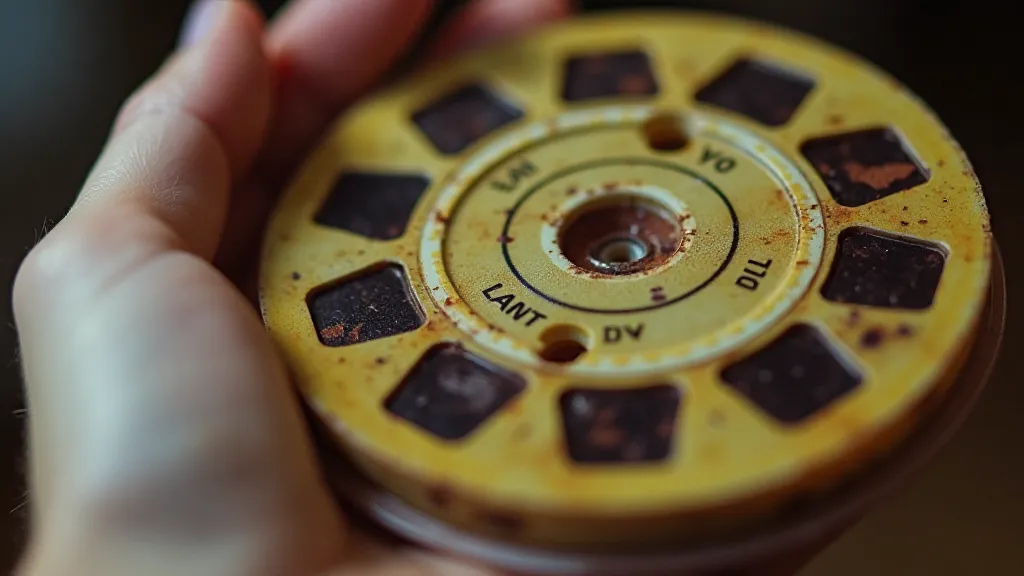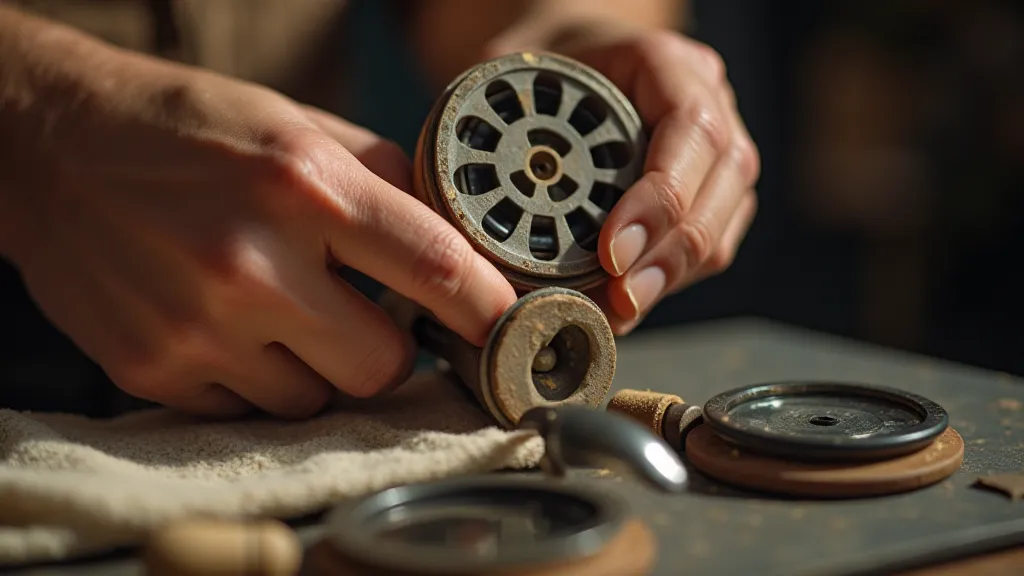The Whisper of the Past: Deciphering Stories from Reel Markings
There's a quiet magic in holding a View-Master reel. It’s more than just a piece of plastic; it's a time capsule, a portal to moments long gone. As a collector for over thirty years, I've found that the true depth of that connection isn’t just in the vibrant images themselves, but in the subtle clues etched onto those reels – the markings, codes, and stamps that whisper secrets of their origin and history. These aren't just random identifiers; they're fragments of a bygone era, testaments to the meticulous craftsmanship and evolving business practices of the View-Master company and its licensees.
My own fascination began with a single reel – “Grand Canyon National Park, 1952.” It wasn’t the breathtaking vistas that captivated me as a child, but the small, almost imperceptible "G" stamped on the back. What did that 'G' mean? It launched a decades-long quest to understand the language of View-Master markings – a quest that continues to this day.

Early Markings: A Glimpse into the Fisher Days
The earliest View-Master reels, produced during the reign of inventor William Babbitt and later the Fisher Photo Viewer Company (1938-1963), carry markings that offer vital clues to their age and production run. The "G" I discovered on my Grand Canyon reel? That signified "G.I.S." – General Imaging Service, Fisher’s printing division. These early markings are generally straightforward: a series number indicating the reel's place in the overall catalog, often accompanied by a date or year. Reels from the late 1930s and early 1940s frequently lack dates, making identification more reliant on the series number and accompanying images. The subtle differences in font and placement alone can distinguish a reel produced in 1939 from one made in 1942.
It's important to note that early reel numbering wasn’t always consecutive. Production runs were often disrupted by wartime material shortages, and some series were skipped entirely. This inconsistency creates a fascinating puzzle for collectors: piecing together the gaps and understanding the nuances of production during a period of immense global change.
The Sawyer Years: Complexity and Licensing
The acquisition of View-Master by Sawyer Products in 1963 marked a significant shift. While Sawyer initially continued production using many of Fisher's established systems, they also introduced a greater degree of complexity to the marking system. Licensing agreements became increasingly important, as Sawyer allowed third parties to produce reels based on their own intellectual property – Disney, National Geographic, and various theme parks were among the most prominent licensees.
Sawyer’s markings often included the licensee’s initials or logo alongside the standard View-Master series number. For example, a Disney reel might bear the View-Master “M” marking (indicating a Sawyer-produced reel) alongside the familiar Disney copyright symbol. This detail immediately differentiates it from a reel produced directly by Fisher, and also tells something about the era – Disney’s prominence in the View-Master catalog grew substantially during the 1970s and 1980s.

Decoding the Codes: More Than Just Numbers
Beyond the obvious series numbers and licensee markings, there's a wealth of detail hidden in the sometimes-enigmatic codes stamped on View-Master reels. Some markings indicate the factory where the reel was printed – a crucial piece of information for those researching production history. Others reveal details about the printing process itself – the type of printing plate used, the quality of the photographic reproduction, even the date the film negative was created. These minute details distinguish a first-generation printing from a later, possibly less-careful reproduction.
For example, a small “P” stamp might signify “Photo Engraved,” hinting at the printing method employed. A faint “35mm” marking suggests the original photographic negative was derived from 35mm film – a common practice for capturing images for reproduction.
The Art of Preservation & Restoration – A Respectful Approach
As a restorer, I’m deeply committed to preserving these pieces of history. The markings themselves are an integral part of the reel's story, and any attempt to obscure or remove them is a disservice to the past. Cleaning vintage View-Master reels requires a gentle touch. Harsh chemicals can damage the plastic and fade the markings, rendering them illegible. A simple, damp cloth is often sufficient to remove surface dust and grime. If more stubborn stains persist, a very mild soap solution, applied sparingly, can be effective.
Repairing damaged reels is equally delicate. Small cracks can sometimes be mended with clear archival tape, ensuring the markings remain visible. However, significant damage – broken reels, faded images – are best left as they are, treated as poignant reminders of the passage of time. It’s about celebrating the reel’s journey, acknowledging its imperfections, and allowing it to continue whispering its story.

A Legacy in Miniature
Collecting and restoring View-Master reels isn't just about acquiring objects; it’s about connecting with a bygone era, understanding the evolution of photography and entertainment, and appreciating the skill and dedication of those who brought these miniature worlds to life. Each marking, each code, each tiny imperfection tells a piece of that story – a story of innovation, artistry, and the enduring power of visual storytelling. By carefully deciphering these whispers from the past, we ensure that these miniature portals to other times and places continue to inspire and enchant generations to come. The quiet magic of the View-Master reel lies not just in the images it displays, but in the secrets it holds – a legacy waiting to be discovered.




